Safe zones in the femur for pin insertion
1. General considerations
Inserting percutaneous instrumentation through safe zones reduces the risk of damage to neurovascular structures.
Upper leg
The diaphysis of the femur is surrounded by a thick muscular envelope. The major neurovascular structures are located medially and posteriorly, and, therefore, the femur can safely be approached over the anterolateral region.
For pin insertion, the condition of the soft-tissue envelope of the femoral shaft has to be considered (areas of crush injuries, or areas of extensive soft-tissue damage should be avoided, in order to minimize the risk of subsequent pin-track infection).
The safest anatomical zones for pin insertion are from anterior around to direct lateral regions of the femur. See anatomical location of muscle groups and neurovascular bundles in each respective region.
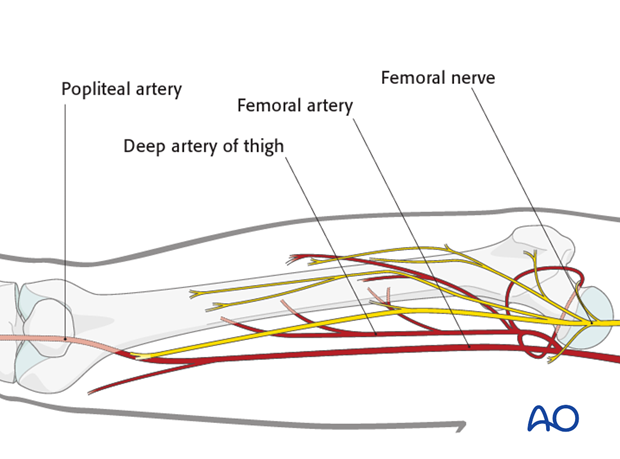
Lower leg
Common peroneal nerve and saphenous nerveThe common peroneal nerve runs from the center of the popliteal fossa laterally and curves distally around the fibula head in an anterolateral direction. It separates into a superficial and a deep branch. Injury of this nerve will result in severe functional deficits.
The saphenous nerve runs distally along the anteromedial aspect of the thigh and as it passes the knee joint it branches off the infrapatellar nerve. Injury of this nerve will not result in functional deficit, but can give rise to cutaneous sensory symptoms.
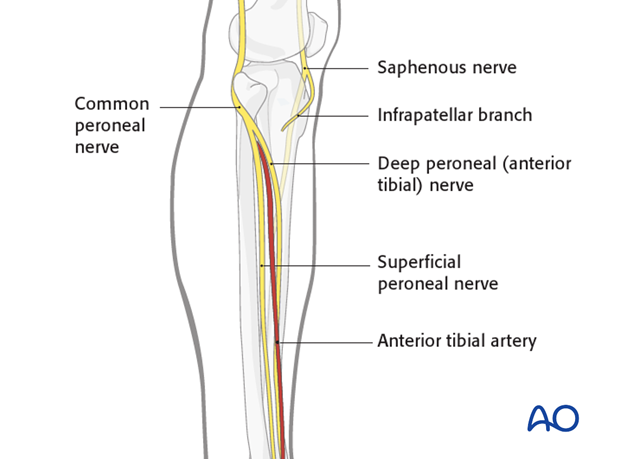
The popliteal artery runs through the center of the popliteal fossa. It separates into the anterior tibial artery, the fibular artery and the posterior tibial artery at the level of the proximal tibia shaft (the trifurcation).
The anteromedial aspect of the tibia provides an easily accessible and safe area for the insertion of external fixator pins.
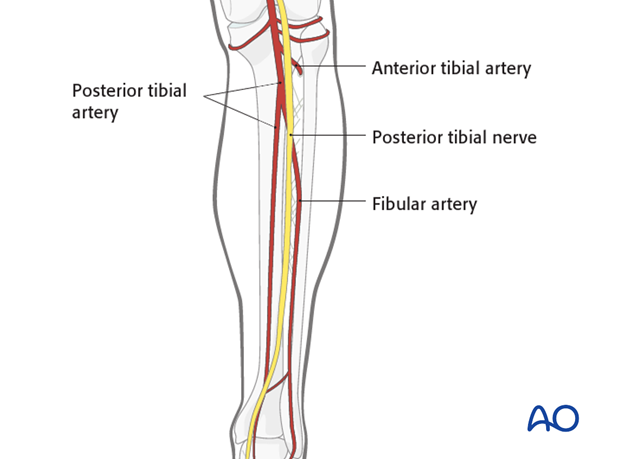
Conversion of a temporary external fixator to nailing, or plating
Care should be taken over pin insertion in cases where the external fixator is used as a temporary device and where it is to be converted, either to an intramedullary nail, or to a plate fixation, at a later stage. A common mistake is to insert the pins too close to the future surgical zone. Therefore, in the distal femoral fractures, the pin should be inserted into the proximal one third of the femur and into the midshaft area of the tibia.
2. Safe zone in the midshaft of the femur
The anatomy in the area between the two solid green lines (on the enlarged view) is represented by one cross section and does not vary significantly between different levels of cross section within this zone.
For an anterior approach, the anterior surface of the femur is palpated, and the skin incision is made. The rectus femoris is split with a snap. The drill guides are inserted through the small incision and the drill is carefully used to drill bicortically but not plunge for fear of hitting the sciatic nerve.
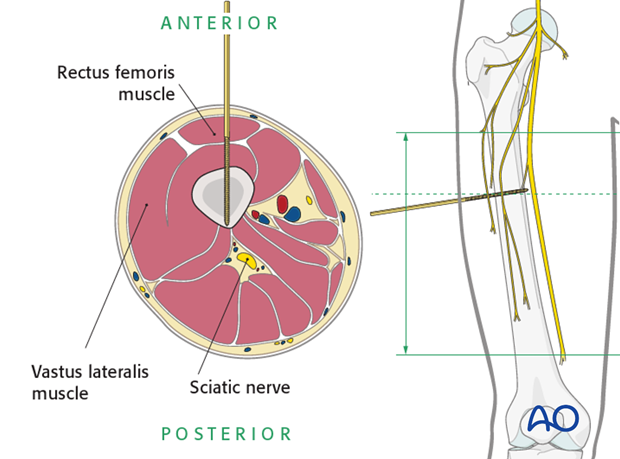
For a direct lateral approach, palpate the vastus lateralis muscle belly and insert the pins as shown in the diagram, aiming to gain purchase in both cortices.
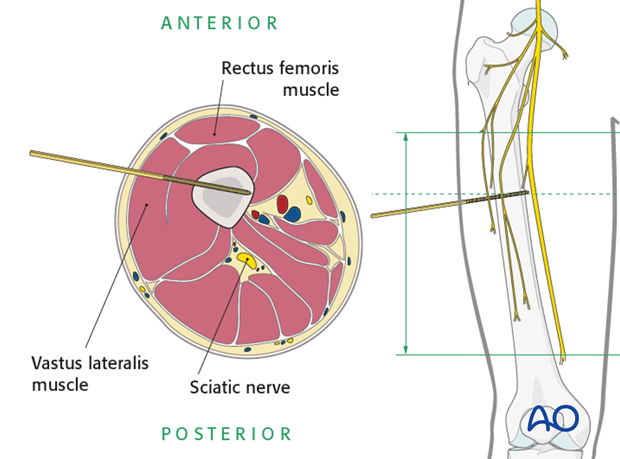
3. Safe zone in the midshaft of the tibia
The neurovascular bundle with the anterior tibial artery and vein, together with the deep peroneal nerve, runs close to the posterolateral border of the tibia.
These structures are at risk if the pin is inserted in the direction indicated by the red dotted line.
The pins in the tibia should start approximately 1 cm medial to the tibial crest, on the anteromedial aspect of the tibia, and are angled approximately 20° from the sagittal plane.














